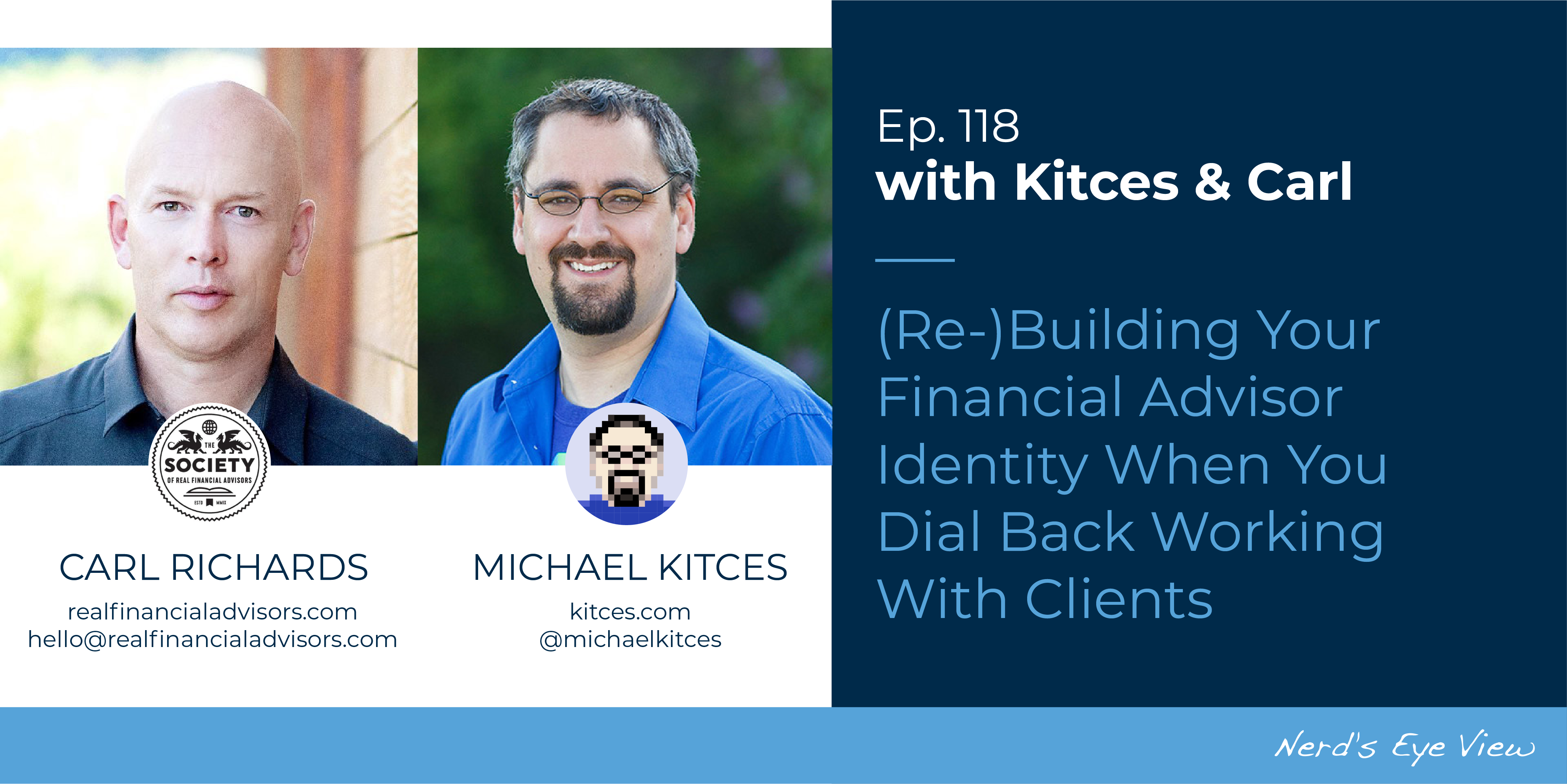Financial advisors who have established and successfully built up their advisory firms over several years can often go through many stages of firm development, requiring them to hire staff and additional advisors to manage their growing clientele. When a firm becomes large enough, though, the firm owner may be compelled to consider stepping away from their long-standing work as a client-facing financial advisor into a more pronounced business leadership role to manage the growing business. Yet, for owners who have invested years into developing their skills as financial advisors working directly with clients, considering a new professional identity in a non-advisory leadership position with little client interaction can be challenging.
In our 118th episode of Kitces & Carl, Michael Kitces and client communication expert Carl Richards discuss how advisory firm owners can manage the transition from a client-facing role into a firm leadership position and how they can come to terms with their new career identity in the process.
While there are many business resources available to help advisors address the tactical perspective of making a transition into a leadership role, a fundamental challenge that advisors must also negotiate is the identity shift that tends to come with leaving a long-time position working with clients, as many wonder if they would still be considered a financial advisor if their primary function is to oversee other advisors serving their clients… and they no longer work with those clients directly themselves?
Even though it can be difficult for firm owners to imagine who they will become in their new role, the transition can become easier by understanding and defining what their new responsibilities will entail and acknowledging that, even though they may no longer be working directly with clients, they will still have a substantial impact on how their clients are served (as becoming CEO or president offers firm owners the opportunity to shape how clients are served by managing those who will be serving clients). Additionally, having a clear and detailed vision of what their new role involves (perhaps created with the support of other advisors who have navigated similar trajectories) will help advisory firm owners reconcile the change in their professional identity by connecting how their current responsibilities relate to, and perhaps will even support their new role.
Ultimately the key point is that transitioning away from a client-centric role that a firm owner has dedicated years to develop can be a challenging process, but investing time to visualize the impact and change the firm owner will make (including the responsibility of charging their staff to uphold a standard of excellent client service) can help them appreciate the new opportunities – and accept the new identity – that will come with the new role!


